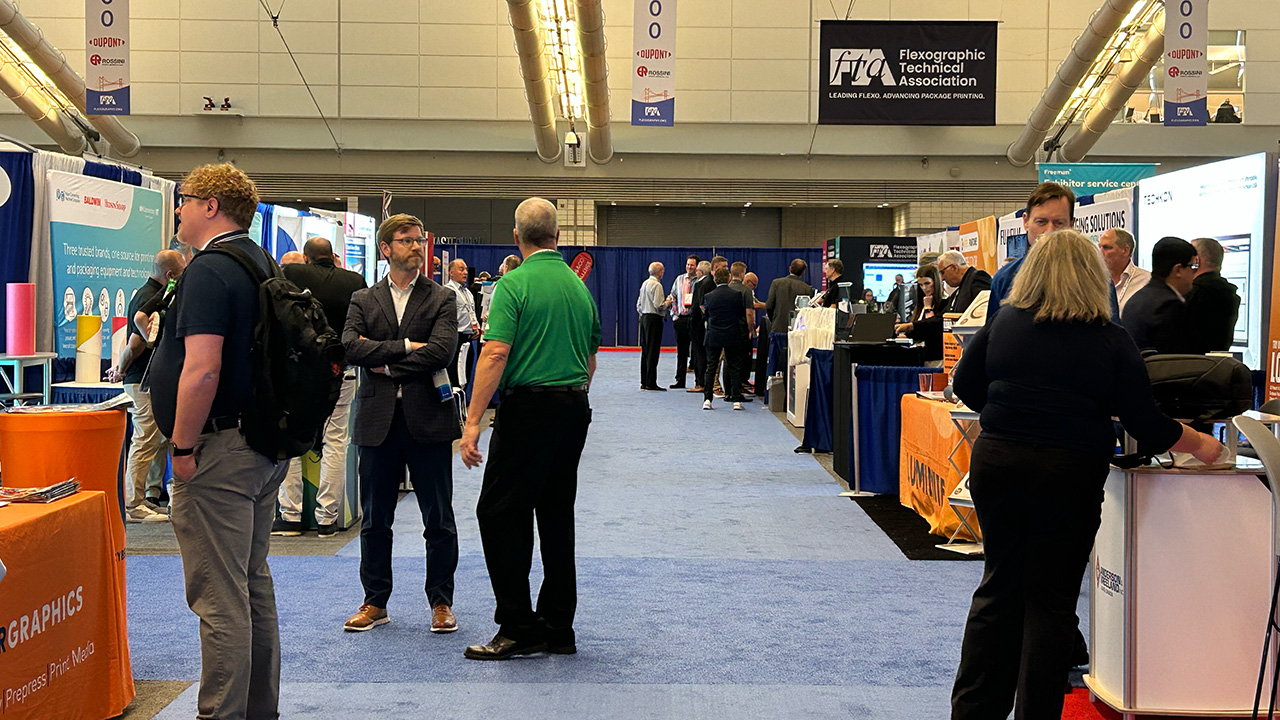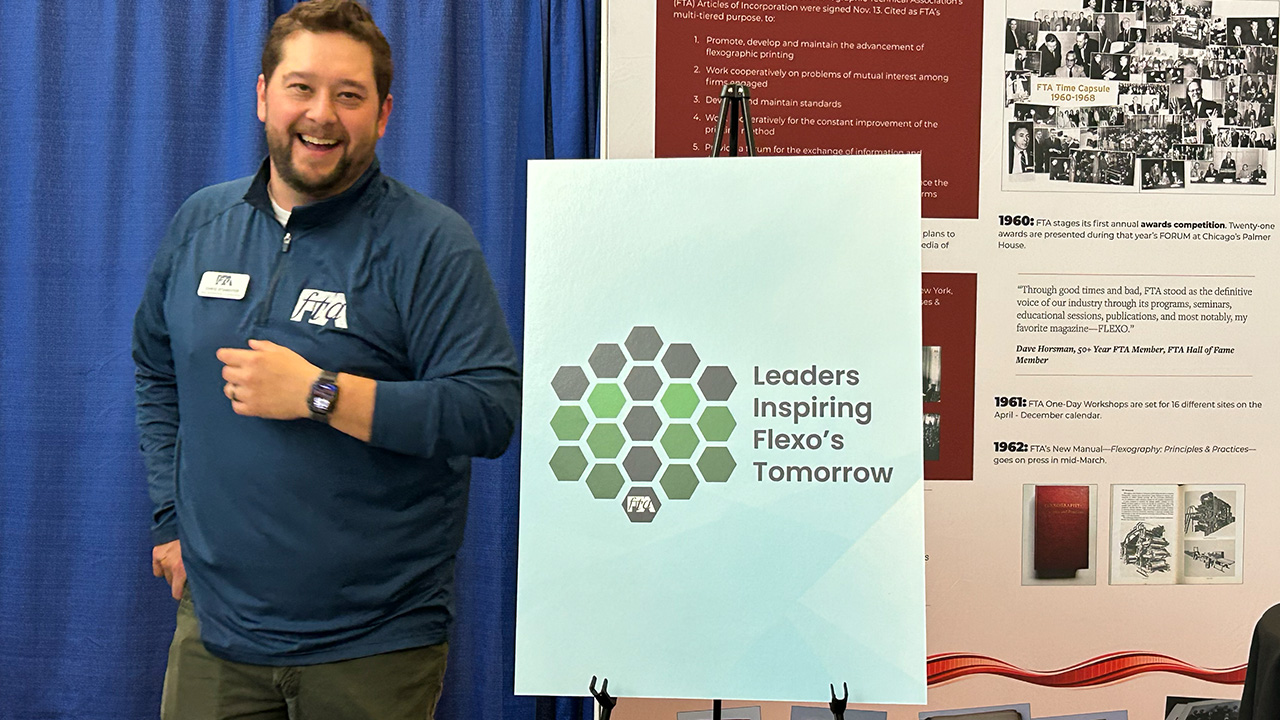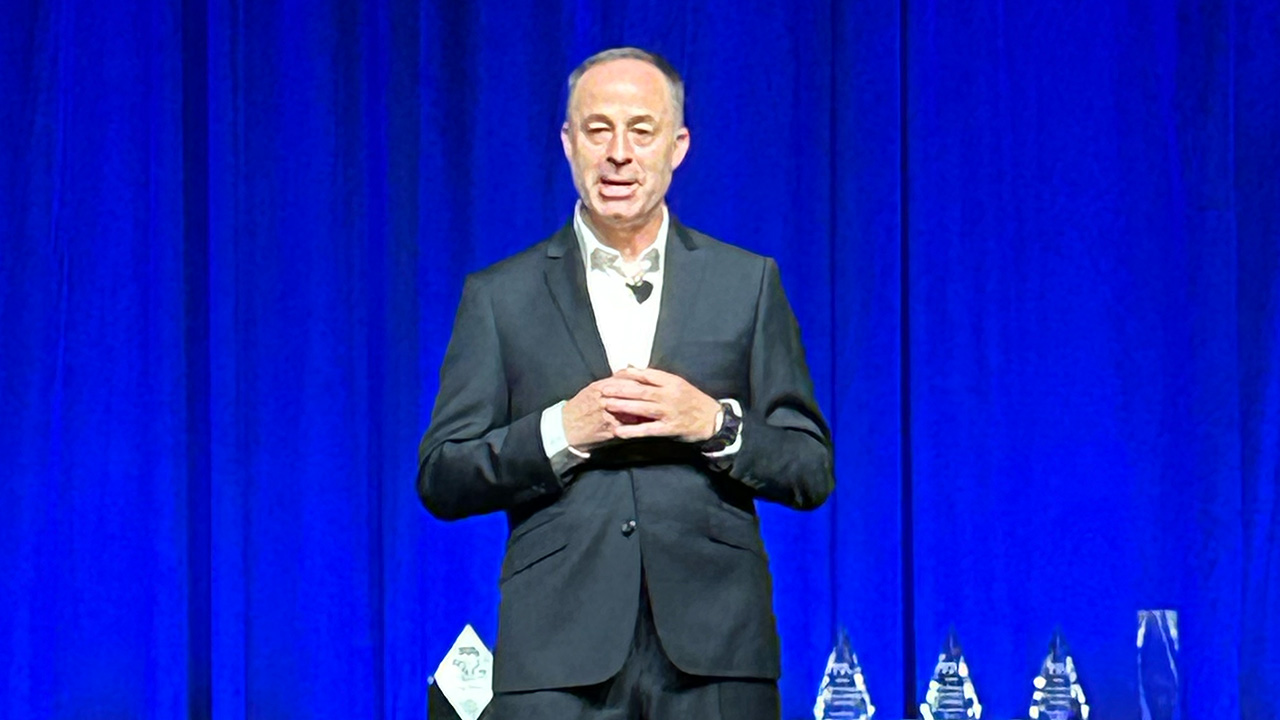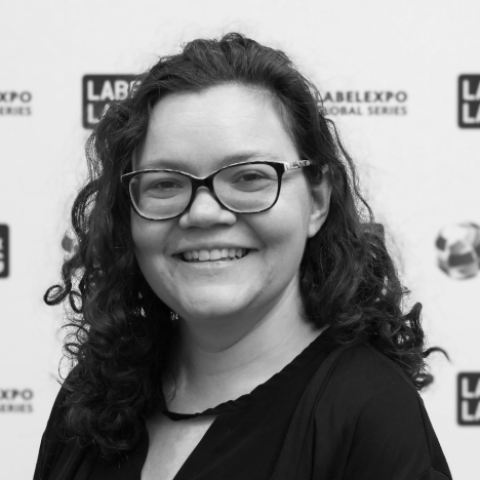Under new leadership, FTA aims to deliver more
The FTA Forum InfoFlex in Pittsburgh, Pennsylvania, explored the most significant developments shaping the flexo industry.

FTA Forum InfoFlex, the Flexographic Technical Association’s signature event, was an opportunity for those in both technical and nontechnical roles to learn about technology and trends.
Approximately 1,000 people attended the event this year, which took place at the David L. Lawrence Convention Center in Pittsburgh, Pennsylvania, from May 4 to 7.
Each day began with a keynote, followed by the forum portion, which included speaker sessions on a wide range of topics, such as Flexo Quality Consortium projects, recruitment strategies and Sunrise 2027, the retail industry’s goal to transition from traditional barcodes to 2D barcodes by the end of 2027.
The InfoFlex exhibition portion took place during the afternoons on May 5 and 6.
On the first day, Tasha Ventimiglia, Labelexpo group director for the Americas, moderated a panel featuring John McDowell, president of McDowell Label, a Resource Label Group company, and Elizabeth Yerecic Freedman, executive vice president of sales and sustainability at Yerecic Label. After Ventimiglia provided an overview of the labels market, McDowell and Yerecic Freedman spoke about sustainability, AI and their companies’ family-owned business models.
‘All businesses crave stability, but family businesses absolutely need it, especially when you have long-tenured team members with you,’ Yerecic Freedman said. ‘They’re all really looking to that next generation, especially around that generational transition point, to make sure that their futures are in good hands.’
The first evening of the event also featured an awards banquet, during which Bettylyn Krafft, co-founder of the Phoenix Challenge, was inducted into FTA’s Flexo Hall of Fame.
FTA builds on its foundation
This year’s Forum InfoFlex differed from previous iterations in several ways.
One change was the addition of keynotes.
FTA also offered concurrent sessions during the forum portion, where a session focused on a technical topic, the other on a subject relating to sales, marketing, industry trends or technology.
Additionally, FTA recently launched a new Emerging Leaders/LIFT cohort for young professionals, and the association held programming for this cohort throughout Forum InfoFlex. During the LIFT happy hour, FTA unveiled the group’s new logo.

Lastly, in March, shortly before the Forum InfoFlex, FTA announced that it was expanding its reach to include the wider package printing industry. While FTA remains committed to flexo, the association is also embracing hybrid, digital, offset and corrugated technologies. Several forum sessions exemplified this, with speakers addressing the ways in which digital and hybrid technologies intersect with flexo.
All of these developments happened under the stewardship of an FTA team with multiple new staff members, led by the association's new president, Nathan Ridnouer.
Ridnouer says the changes at this year’s event came out of feedback from members, who expressed that they wanted their memberships to offer newer and more benefits.
‘In the past, we dabbled in keynotes, or we dabbled in concurrent sessions,’ Ridnouer says. ‘We decided to go all in and say, “You know what? We’re going to Pittsburgh. Let’s make sure we throw a lot more at them this year”.’
Ridnouer comes from a nonprofit background. He most recently served as senior vice president of the Computing Technology Industry Association. He has also worked for the Specialty Equipment Market Association and has a Certified Association Executive credential from the American Society for Association Executives.

Since starting his role at FTA in September 2024, he has been learning about the flexographic print industry and visiting FTA members across the country.
‘I have a lot of respect for what this company has been built into,’ Ridnouer says of FTA. ‘A company doesn’t exist for 66 years by accident. I’m not coming in here to say this place needs a dramatic change, not at all. What I’d like to do is build on the strong foundation and the brand that they’ve built and find new opportunities wherever they are.’
These new opportunities have included educational programs, such as the session, ‘First Training: Level One’, offered in person at the FTA Forum InfoFlex. Led by Kenny Tucker, FTA’s director of technical education, it was an updated version of an FTA online certification program. Ridnouer has also been working to develop FTA’s partnerships with other associations.
The goal of the Forum InfoFlex is threefold, Ridnouer says: to put buyers in front of sellers, to provide technical education and to build community.
‘This is a close-knit group of competitors who come together every year to work with each other, learn from each other,’ Ridnouer says. ‘We’ve got to make sure we make it so that it’s still a community.’
Converging technologies
Several forum sessions focused on the intersection of flexo and digital technology.
‘Digital is coming along,’ Ridnouer notes. ‘We don’t want to ignore it. We don’t want to pretend like it doesn’t exist. We want to make sure that we understand it, we’ve integrated it into our education, and we’ll see if there’s a place in our new house. It’s like you don’t want to take any rooms away from your house that’s already built, but maybe we want to build an addition where we make room for digital in our world.’
During the session titled ‘Hybrid Technologies: Flexo + Digital for Maximum Success’, Benjamin Luly, product manager at Mark Andy, and Windell McGill, ION digital press product launch manager at BW Converting (PCMC), spoke about the benefits of hybrid technology. For example, reducing total capital equipment costs and helping companies win more business.
‘As the digital print speeds increase, the crossover point increases, moving longer run lengths from flexo onto digital hybrid presses, and as run lengths continue to fall, hybrid presses will play a key role in maintaining converter profitability,’ Luly said.
Other talks on this subject included ‘Flexo, Digital and Hybrid — Each Has Its Place,’ with Brian Cleary of HP, Thomas Dahbura of Hub Labels and Thomas Haas of Fortis Solutions Group; and ‘Personalization at Scale: Unlocking the Potential of Digital Printing’ with Greg Horney, national sales manager at Fujifilm.
On the show floor, John Baer, regional sales manager at Mark Andy, told L&L that more customers are moving toward hybrid technology.
'You never know what tomorrow’s going to bring, with what product, with the size of the run,’ Baer said. ‘To have a piece of equipment that can do long runs when needed, or have a piece of equipment that can do short runs, and/or digital, and/or in-line converting. It just makes a lot of sense for a lot of these converters out there. They don’t have to customize their entire shop with a bunch of different pieces of equipment; they can run it all on one piece of equipment.’
This technological convergence isn't limited to the intersection of flexo and digital either. As FTA moves to embrace digital and hybrid, and as converters express interest in hybrid technology that can deliver advantages of both flexo and digital presses, printing companies are expanding to manufacture a wider range of products.
Dan Lacey, strategic business developer for packaging at Canon, manned a booth for both Canon and Edale, which Canon acquired in 2022. Through Edale, Canon is strengthening its position in the packaging industry, particularly via labels and folding cartons. Canon plans to eventually enter the corrugated boxes space as well, Lacey said, and the company anticipates that label converters will diversify into the folding carton and corrugated boxes space, too.
‘People aren’t really niched in a vertical,’ Lacey said. ‘They’re saying, “We’re going to do it all”.’
Artificial intelligence
Forum InfoFlex attendees were particularly interested in learning about AI. As the ‘Leveraging AI in Your Flexographic Workflow’ session was about to begin, a line formed outside the room, with eager attendees waiting to get their badges scanned to enter.
This presentation featured a panel of experts who discussed how AI can be utilized to enhance various aspects of flexo business operations, including workforce training, 3D visualization, color management and more.
To kick off the panel, Megan Burns of Amcor and Marek Skrzynski of CSW presented a 9-minute, AI-generated video. This video told the story of an apprentice named Megan, who uses an AI assistant to put together a packaging project.
‘She fears losing her creative voice,’ an AI-generated narrator says at the start of the video. ‘As the deadline looms, their collaboration takes an unexpected turn, blurring the line between human intuition and artificial intelligence. The final design reflects a perfect balance of logic and artistry, showcasing how humans and AI complement each other.'
Several exhibitors on the show floor, particularly inspection and software suppliers, noted that AI was a significant trend.
Juergen Klicker, president of EyeC, said that AI can reduce the percentage of false judgments made by inspection equipment. At InfoFlex, EyeC showcased its software upgrades and highlighted the speed of its systems, with its newer 8K cameras capable of reaching speeds of up to 1,800 ft/min and its 4K camera capable of 3,600 ft/min for in-line inspection.
‘We are in the process of reducing the number of false alarms dramatically with AI technology, and that is really something that our customers appreciate,’ Klicker said.
Robert Miller, Esko’s general manager for digital flexo solutions business in the Americas, said that Esko is incorporating AI into its products, and that has been a constant focus at the industry trade shows Esko has been attending.
'Customers are really using it in their day-to-day business,’ Miller said of AI. ‘It’s been fascinating to watch it go from even where it was at drupa in June of last year to where it is today, almost a year later.’
Sustainability
Miller, along with other exhibitors, noted that sustainability continues to be a prevailing trend in the industry as well. He said that companies are not interested in ‘green washing’ their business. Rather, they are serious about their interest in identifying ways to be more sustainable and communicating that information to their customers.
In particular, inks and adhesives suppliers at InfoFlex also noted the importance of sustainability.
Jim Krstulic, national account manager and product manager for the tags and labels division at INX International Ink, highlighted the company’s sustainable products, such as its Genesis system of washable inks for plastic materials.
Jay Downey, product manager, adhesives and coatings at Sun Chemical, said that the company is seeing an interest in transitioning from plastic to paper-based materials in flexible packaging. Sun Chemical is also focused on its wash-off inks that aid in the recycling process.
Ashish Datt, senior manager of innovation and sustainability at Siegwerk, noted that sustainability is a complex challenge, and it’s essential to make sure that technologies that enhance sustainability in one area don’t impair sustainability efforts in another area.
‘Enabling the overall sustainable journey with reduction in carbon footprint — that’s the key ingredient,’ Datt said. ‘If you design a solution that requires the overall carbon footprint to be very, very high, then it backfires.’
Stay up to date
Subscribe to the free Label News newsletter and receive the latest content every week. We'll never share your email address.


